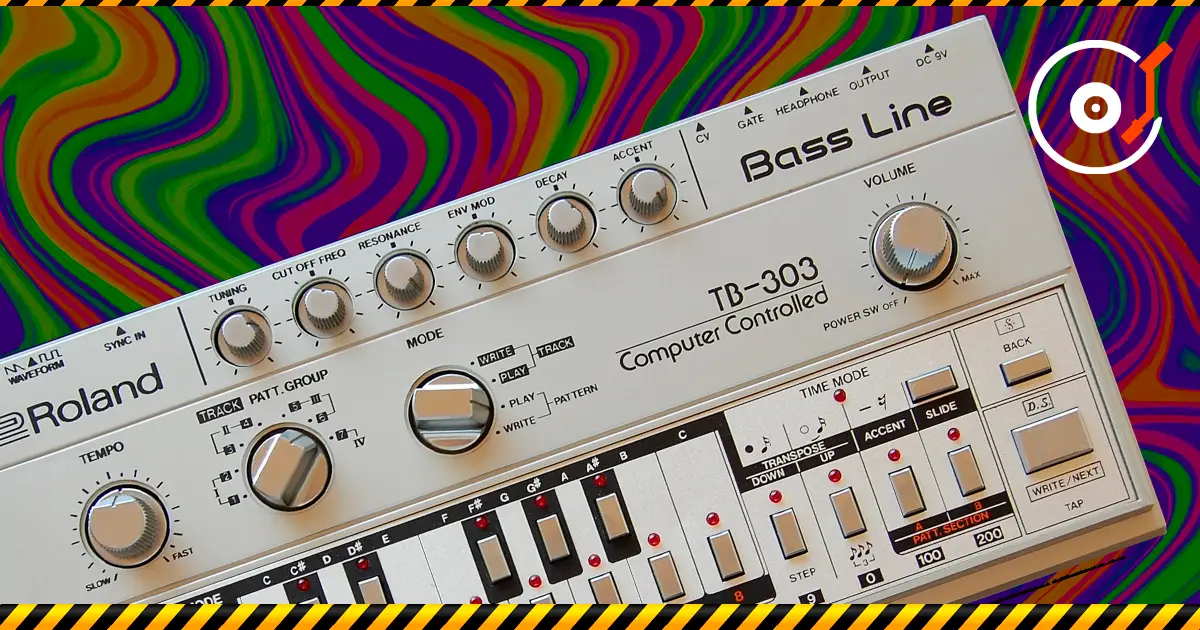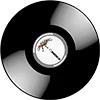
Roland TB-303 Bass Line — the iconic synthesizer that became the symbol of acid house. Learn its creation story, fun facts, influence on music, and modern clones.
Roland TB-303 Bass Line — the legendary synthesizer and sequencer released by the Japanese company Roland in 1981.
Initially designed as a compact bass accompaniment for guitarists, it became the instrument that defined an entire movement in music — acid house and techno.
History
In the late 1970s, Roland was actively experimenting with portable electronic instruments. The TB-303 was conceived as an “electronic bassist” to pair with the TR-606 Drumatix drum machine.
Engineer Tadao Kikumoto (who also designed the iconic TR-909) aimed to recreate the sound of a bass guitar — but the result turned out far more synthetic and “buzzing.”
Sales were a failure: only about 10,000 units were produced. Musicians considered its tone “unnatural” and its programming overly complicated. Roland discontinued the TB-303 by 1984.
Rebirth — The Acid Revolution
A few years later, the TB-303 found new life — in Chicago’s underground rave scene.
-
Young DJs and producers such as Phuture, DJ Pierre, Adonis, Armando, and Hardfloor began using the 303 not as a bass instrument, but as a psychedelic synthesizer.
-
In 1987, the track Phuture – Acid Tracks was released, becoming the first acid house record.
-
The “acid” sound of the TB-303, with its distinctive filter resonance and squelchy note slides, became the defining feature of the new genre.
Design and Sound Characteristics
-
Core: single oscillator (sawtooth or square wave).
-
Filter: 18 dB low-pass with strong resonance.
-
Sequencer: built-in 16-step sequencer allowing pitch, slide (glide), and accent control.
-
The magic: slide + accent — these functions made notes “flow” into one another, creating the iconic liquid acid bass sound.
Interesting Facts
-
The TB-303 stands alongside the TR-808 and TR-909 as one of the three instruments that shaped electronic music.
-
After the 1990s, demand for originals skyrocketed — prices on the secondhand market exceeded USD 4,000.
-
Roland has repeatedly reissued the 303:
-
TB-3 (AIRA, 2014) — digital emulation;
-
TB-03 (Boutique, 2016) — compact reissue with USB and MIDI;
-
Clones by Behringer, Cyclone Analogic, and RE-303 became popular among producers.
-
-
Iconic tracks made with the 303 include:
- Hardfloor – Acperience
- Josh Wink – Higher State of Consciousness
- Daft Punk – Rollin’ & Scratchin’
- Underworld – Born Slippy
- The Chemical Brothers – Leave Home
Influence on Music
The TB-303 became the heart of acid house, acid techno, and trance, and its sound later appeared in drum’n’bass, psytrance, electro, and pop.
Today, it remains a symbol of the DIY revolution — a simple machine that turned design flaws into art.
“Roland wanted to make an electronic bass guitar.
The world got a new generation of dance music.”
Conclusion
Roland TB-303 is not just a synthesizer — it’s a cultural phenomenon.
It proved that chance and experimentation can change the course of music history.
From an underrated “toy” for guitarists, it became the instrument that gave birth to the acid sound — one that continues to shape club culture to this day.

